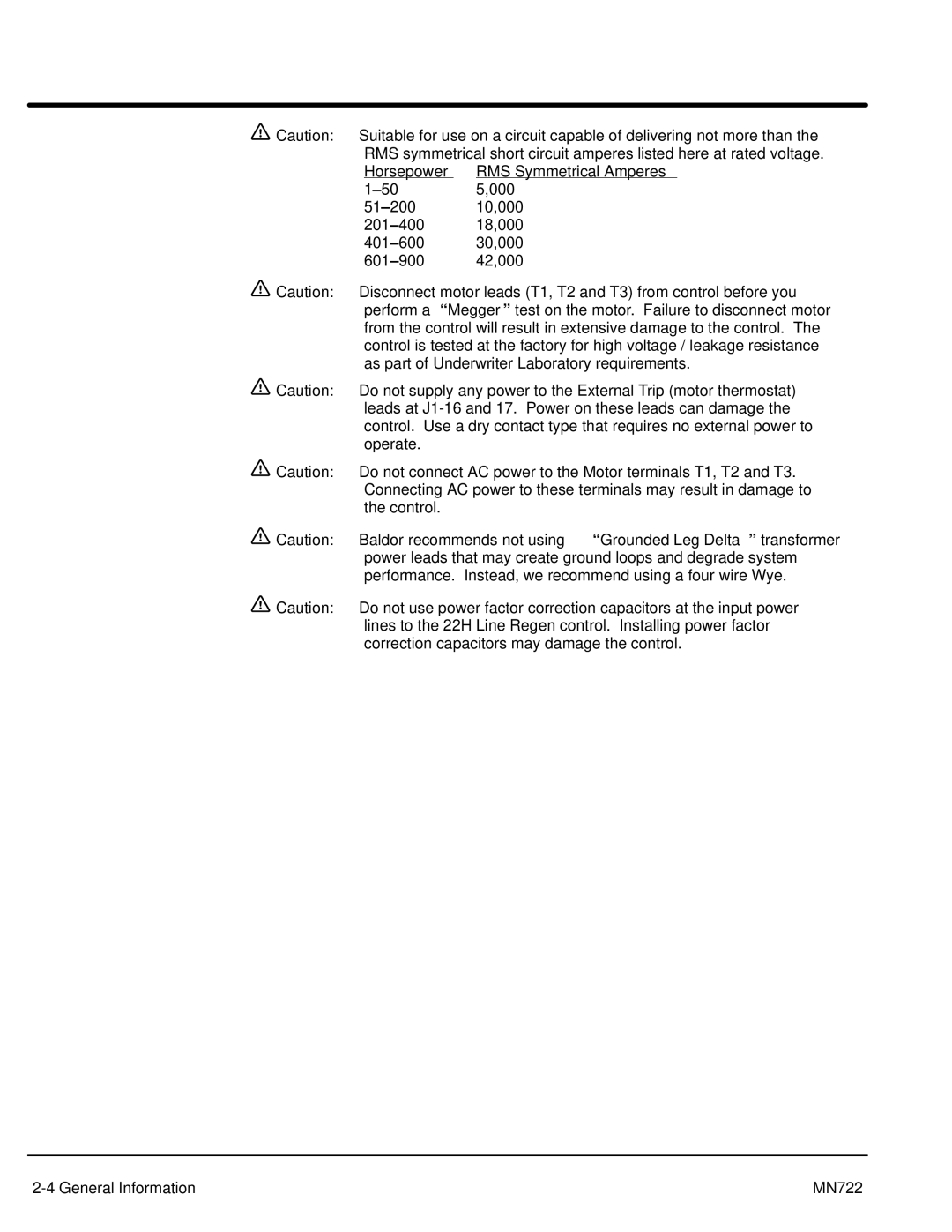
Caution: | Suitable for use on a circuit capable of delivering not more than the | |
| RMS symmetrical short circuit amperes listed here at rated voltage. | |
| Horsepower | RMS Symmetrical Amperes |
| 5,000 | |
| 10,000 | |
| 18,000 | |
| 30,000 | |
| 42,000 | |
Caution: | Disconnect motor leads (T1, T2 and T3) from control before you | |
| perform a “Megger” test on the motor. Failure to disconnect motor | |
| from the control will result in extensive damage to the control. The | |
| control is tested at the factory for high voltage / leakage resistance | |
| as part of Underwriter Laboratory requirements. | |
Caution: | Do not supply any power to the External Trip (motor thermostat) | |
| leads at | |
| control. Use a dry contact type that requires no external power to | |
| operate. |
|
Caution: | Do not connect AC power to the Motor terminals T1, T2 and T3. | |
| Connecting AC power to these terminals may result in damage to | |
| the control. |
|
Caution: | Baldor recommends not using “Grounded Leg Delta” transformer | |
| power leads that may create ground loops and degrade system | |
| performance. Instead, we recommend using a four wire Wye. | |
Caution: | Do not use power factor correction capacitors at the input power | |
| lines to the 22H Line Regen control. Installing power factor | |
| correction capacitors may damage the control. | |
| MN722 |
